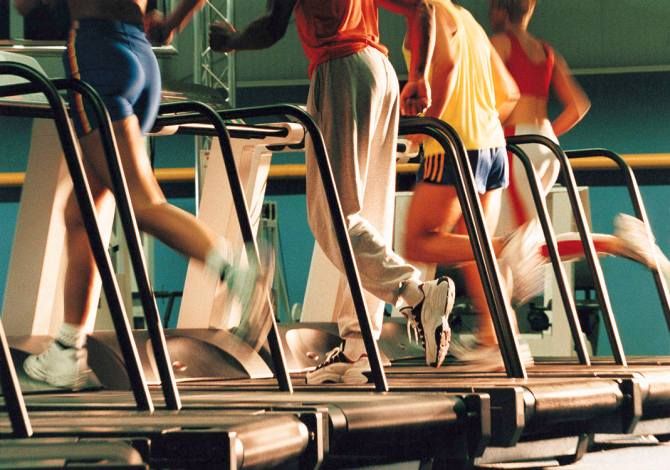Dave Goldberg died while running on a treadmill in a gym. Sure, accidents can happen anytime but here's what you can do to keep yourself safe while at the gym.

Photograph: Trcanje Rs/Creative Commons
On the heels of the death of Silicon Valley executive Dave Goldberg, the question that comes to mind is: How safe is gym equipment?
Equipment designed today is actually very safe, complete with emergency stop buttons. However, there are other reasons that can make them unsafe. Here's what you need to know before you get onto any machine.
1. Beware of any pre-existing medical condition
A lot of accidental deaths that happen in the gym are due to pre-existing medical conditions; the exercise or equipment merely act as triggers.
If you do have any medical problems or have had any in the past, you must follow the necessary precautions as per doctors' orders. There's simply no getting around this.
If you exercise in a gym or under a trainer, they must be informed of your condition.
You must also get your workout programme approved from your doctor before you begin.
2. Get a health check-up done
Okay, you are young and you probably don't think it is worth your while.
But a lot of pre-existing health problems remain undetected till you consciously get yourself tested.
Getting a check-up done at least once a year will keep you updated and would show signs of anything that could be a problem.
3. Make sure the equipment is routinely and properly cared for and checked for any problems.
Equipment that is old, unused, dusty, or one that gives trouble should be fixed to top condition or done away with.
Whether the equipment is in your house or at a gym, make sure you only step onto it if it has been serviced and checked regularly.
Gyms usually have maintenance staff who check all equipment monthly.
4. Place the equipment correctly
Placing a treadmill between two walls can be dangerous if the equipment goes out of whack suddenly.
Make sure there is enough room behind and on the sides.
Observe the instructions in the manual for placement to avoid accidents.
5. Learn how to operate the machine from start to finish
Machines range from simple to complex.
Ensure you understand how to work it yourself.
Do not rely on someone else to come and start, stop or make changes for you.
Do not press any buttons you are not familiar with.
6. Learn the correct form and technique of executing the exercise
To begin with ensure you know how to get on and off the machine in the recommended safe manner.
Learn the correct position needed to be in for the exercise and the exact movement.
How should the legs move, where should the hands be placed, what are the permissible variations and what is a strict no-no?
Be well aware of all these things before you set foot.
7. Know your limits
What can really be dangerous is stepping up the speed on a treadmill and then not being able to keep up.
Sometimes it's too late for you to hit the emergency stop button.
This is a common mistake with beginners who want to knock weight off desperately.
Always, start off at a comfortable pace, gradually increasing your level as you get fitter.
Same goes with weight machines. Start off light and then slowly build up to heavier weights as your body gets stronger.
8. Know what to do should you start feeling too tired, dizzy or faint.
You must first slow down the pace of your cardio machine and then stop it.
Do not stop it suddenly as you could fall.
Alert the person next to you and ask for their help to get you off the machine and get you to a cool airy place.
They should then ask for someone with first aid to assist you.
If no one is around get off the machine very slowly and taking support walk towards a more open space.
Drink some water and call someone for help.
9. Do not watch TV, answer phone calls or send texts while on the machine
For the same reason that phone calls and texting is banned while driving, avoiding using them while on a machine can save your life.
When the mind is distracted from the exercise it can lead to accidents. It also makes the exercise less effective. Use your workout time to focus on your body.
10. Do not work out when you don't feel well
When you are ill, the body needs to rest and get back to normal.
When pushed to exercise under these circumstances you could be asking too much and the body may buckle under pressure.
Observe these guidelines and your workouts will be safe and effective!
Note: Photograph used only for representational purpose










